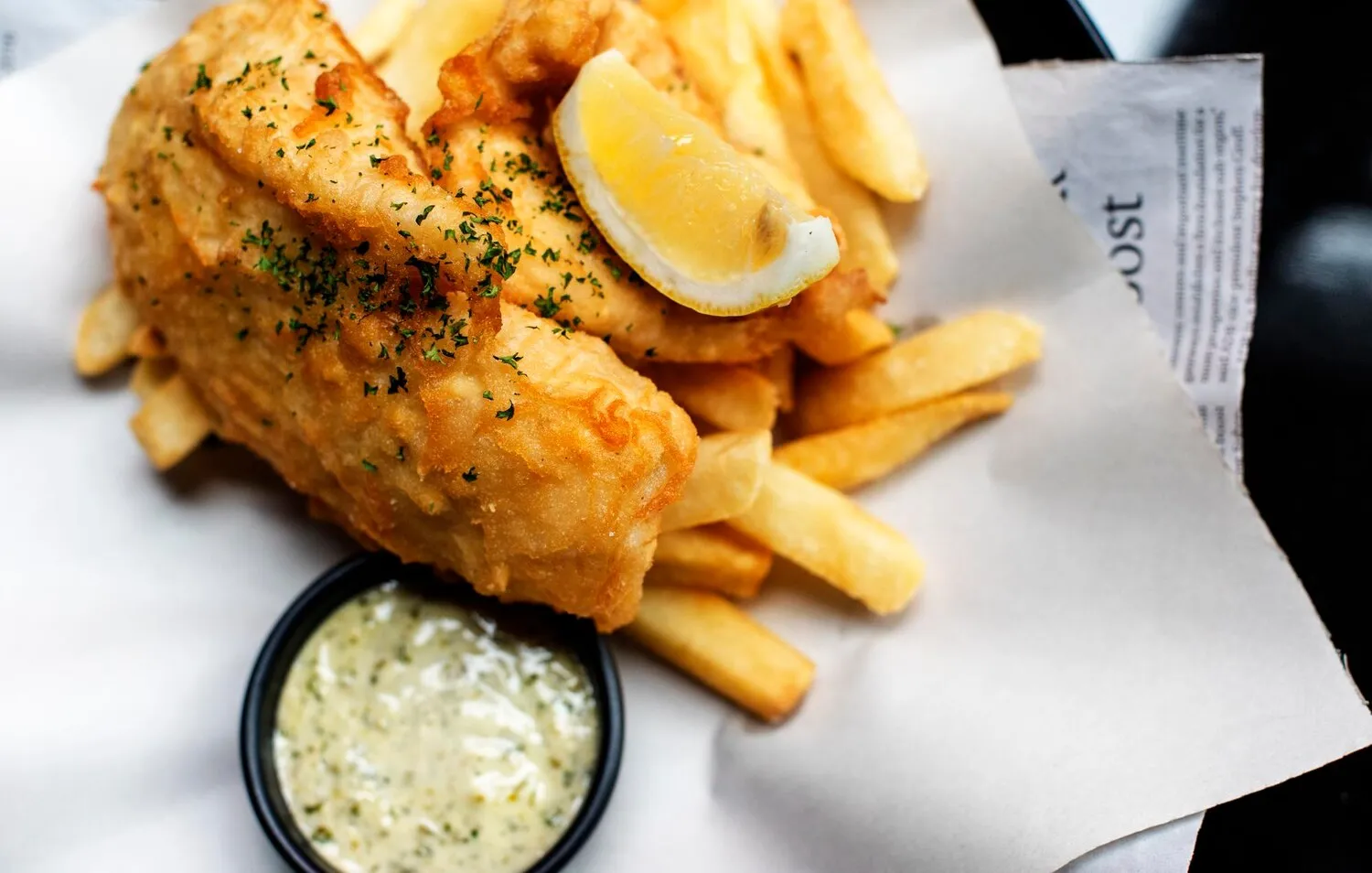
Salmon Fish and Chips
Classic Salmon Fish and Chips.
Nutrition Facts
* The % Daily Value (DV) tells you how much a nutrient in a serving of food contributes to a daily diet. 2,000 calories a day is used for general nutrition advice.
Cockney Kings Fish & Chips
Fish and chips originated in England in the mid-19th century, combining fried fish, introduced by Jewish immigrants from Portugal and Spain, with chips (fried potatoes), a popular working-class food. The introduction of salmon as the primary fish is a more recent adaptation, catering to preferences for richer, more flavorful fish.
While traditionally associated with cod or haddock, Fish and Chips represents a cornerstone of British culinary culture, often enjoyed as a casual, takeaway meal. Salmon Fish and Chips elevates this classic dish with a more premium ingredient, reflecting evolving tastes and preferences.
Takeaway Tradition
Fish and chips is traditionally a takeaway meal, wrapped in paper and enjoyed on the go or at home. Salmon fish and chips often appears in restaurants or gastropubs.
A Seaside Staple
Fish and chips is heavily associated with seaside towns, where fresh catches were readily available. Salmon, while not necessarily a seaside fish in the UK, retains the association with freshness and quality.
Friday Night Treat
For some, eating fish and chips on a Friday night is a long-standing tradition, particularly among Catholic communities who abstained from meat on Fridays.
Salmon Fish and Chips offers a richer, more pronounced flavor profile than traditional cod or haddock. The batter provides a crispy, savory counterpoint to the oily, flavorful salmon.
The salmon fillet provides a rich, fatty flavor distinct from the milder taste of white fish. The batter, typically made from flour, baking powder, and seasonings, creates a crispy, golden-brown crust. The deep-frying process imparts a savory, slightly oily taste. The fries, typically thick-cut potatoes, offer a starchy, comforting flavor that complements the fish. Tartar sauce, lemon wedges, or malt vinegar are commonly served alongside to add acidity and brightness.
Temperature Control
Maintain a consistent oil temperature (around 350-375°F or 175-190°C) to ensure the batter cooks quickly and evenly without becoming greasy. The salmon should cook through without drying out.
Batter Consistency
The batter should be thick enough to coat the salmon fillet evenly but thin enough to create a light and crispy crust. Avoid overmixing the batter to prevent gluten development, which can result in a tough crust.
Salmon Preparation
Pat the salmon fillets dry with paper towels before battering to help the batter adhere properly. Consider using skin-on fillets for added flavor and texture, but ensure the skin is scored to prevent curling during frying.
Oil Choice
Use a neutral-flavored oil with a high smoke point, such as vegetable, canola, or peanut oil, for deep-frying.
Explore additional Fish and Chips dishes and restaurants
Explore Fish and ChipsDiscover top dining spots and culinary experiences in New Westminster.
Explore New WestminsterLearn more about the food culture, restaurant scene, and culinary heritage of Canada.
Explore Canada